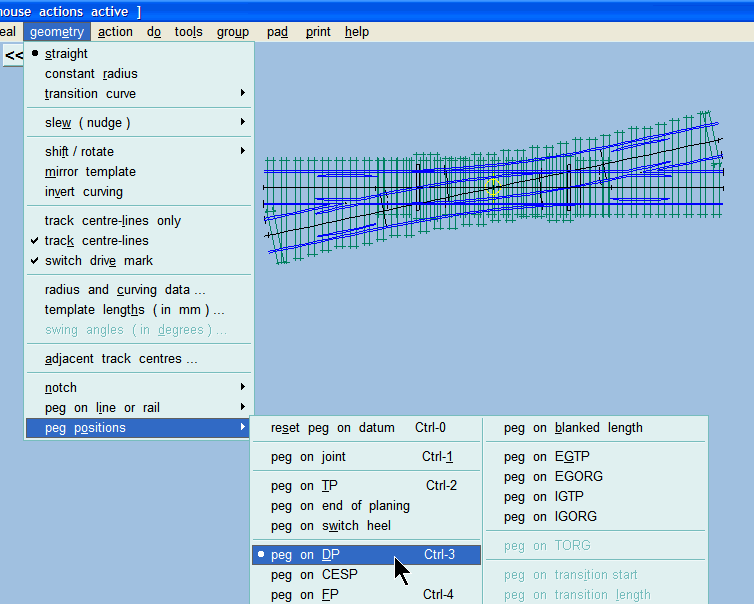Templot Club Archive 2007-2020
|
|||
| author | remove search highlighting | ||
|---|---|---|---|
|
posted: 18 Jun 2008 22:45 from: Geoff Cook
click the date to link to this post click member name to view archived images |
Hi Martin has placed in samples and examples box files for Peco small and large radius turnouts, does anybody have a box file of the Peco medium radius turnout in 00 that they would like to share needed to create new fiddle yard entrance Geoff Cook |
||
|
posted: 24 Jun 2008 02:28 from: Martin Wynne
click the date to link to this post click member name to view archived images |
Geoff Cook wrote: Martin has placed in samples and examples box files for Peco small and large radius turnouts, does anybody have a box file of the Peco medium radius turnout in 00 that they would like to shareHi Geoff, I intended to create templates for all the Peco range, but retired as a mental wreck after just two! Sorry about that. However, all the Peco turnouts have a common 12-degree exit angle. That means that you can create a "footprint" for planning purposes for a medium radius turnout simply by adding some approach track to the short turnout template. It won't look like a medium radius turnout, but the three rail-end positions will correspond to one for layout planning. The short turnout has an overall length of 185mm. As far as I know, the medium radius turnout has an overall length of 219mm. (If you have one to hand, please check its length.) That's a difference of 34mm. So starting with a small radius turnout as the current/control template, go to the geometry > template lengths (in mm)... menu item. Then set the approach track length to 34mm and the overall length to 219mm. Leave the blanking length as zero. Store the new template as "peco footprint for medium radius turnout". regards, Martin. |
||
|
posted: 29 Jun 2008 08:31 from: Peter Salathiel
click the date to link to this post click member name to view archived images |
Hi Martin, Like many other newbie double0 eseffers over the years I have accumulated quite a bit of Peco track some of which I plan to use in hidden sidings etc. Your Peco templates - just entry and exit is fine - are thus much appreciated. Any chance you could include a short and long crossing in the collection. Would two tracks, crossing length, overlapping at 12 degrees, suffice? Regards Peter |
||
|
posted: 29 Jun 2008 13:14 from: Martin Wynne
click the date to link to this post click member name to view archived images |
Peter Salathiel wrote: Any chance you could include a short and long crossing in the collection. Would two tracks, crossing length, overlapping at 12 degrees, suffice?Hi Peter, Make a Barry slip! For the Peco long diamond-crossing (or slip), start with the short Peco turnout as the current/control template. Put the peg at DP (CTRL+3). Then: store & background geometry > shift/rotate > rotate 180 degrees store & background See: peco_long_crossing.png  That makes a long crossing footprint for planning purposes. Ignore the internal rails and timbering. You might prefer to turn the timbering off. For the short crossing you first need to change the short turnout to 24 degrees: template > V-crossing options... other angle, OK Set the crossing angle to k24 (the k prefix letter enters degrees instead of unit angles) Then repeat the conversion to a Barry slip as above. If you have Peco crossings you can physically measure, check that the actual lengths match these templates along both legs. As with a normal diamond-crossing in Templot, you will need to group the two templates if you want to shift them about as a unit. It would probably be easier to perform the above conversions in situ each time from the short turnout template, it's quite quick to do. Don't use the long Peco turnout for any of this, it won't work. regards, Martin. |
||
| Please read this important note about copyright: Unless stated otherwise, all the files submitted to this web site are copyright and the property of the respective contributor. You are welcome to use them for your own personal non-commercial purposes, and in your messages on this web site. If you want to publish any of this material elsewhere or use it commercially, you must first obtain the owner's permission to do so. |